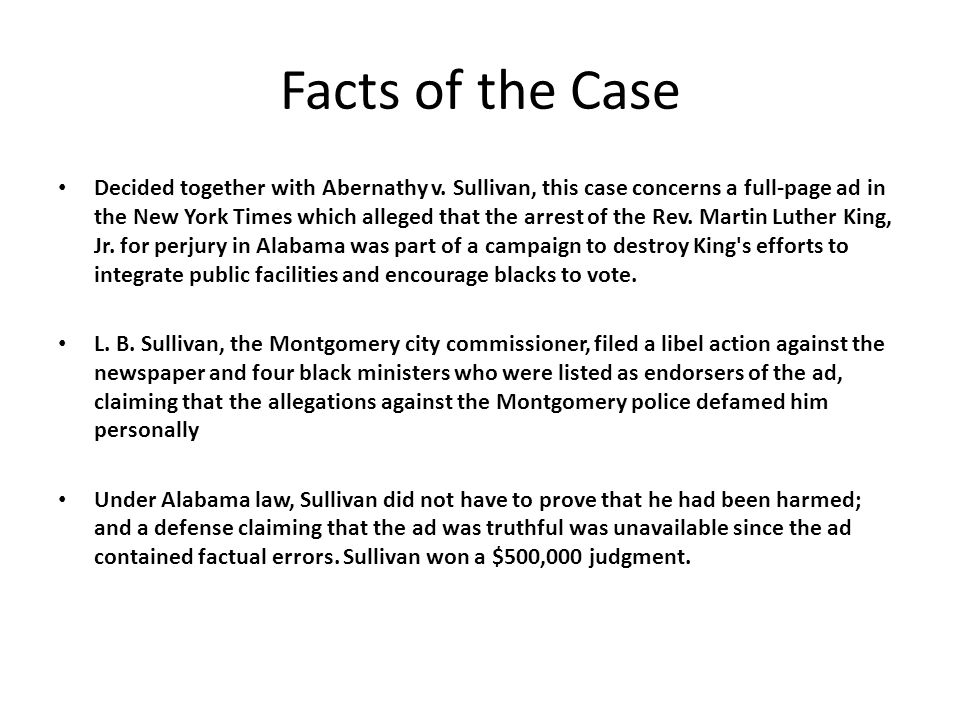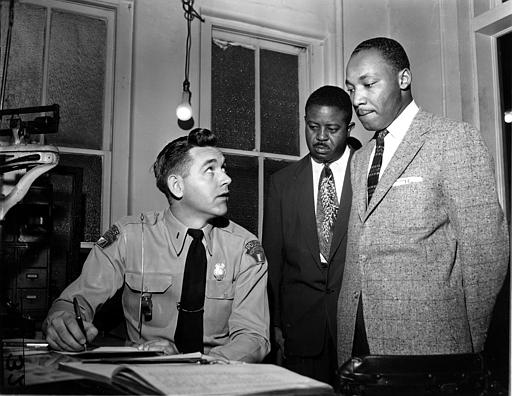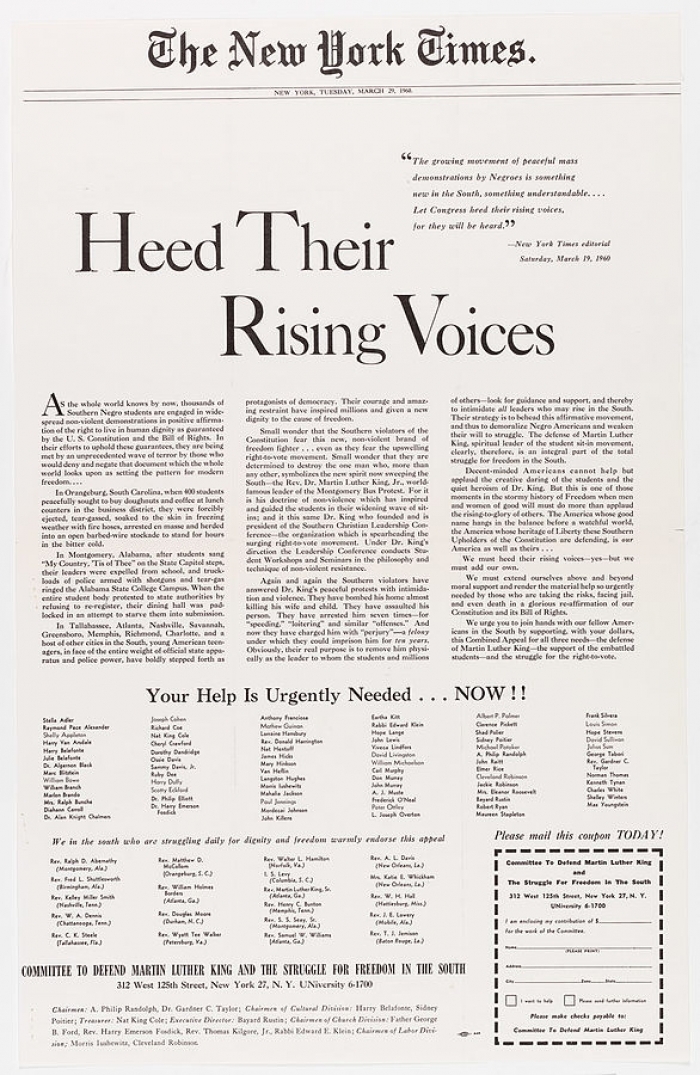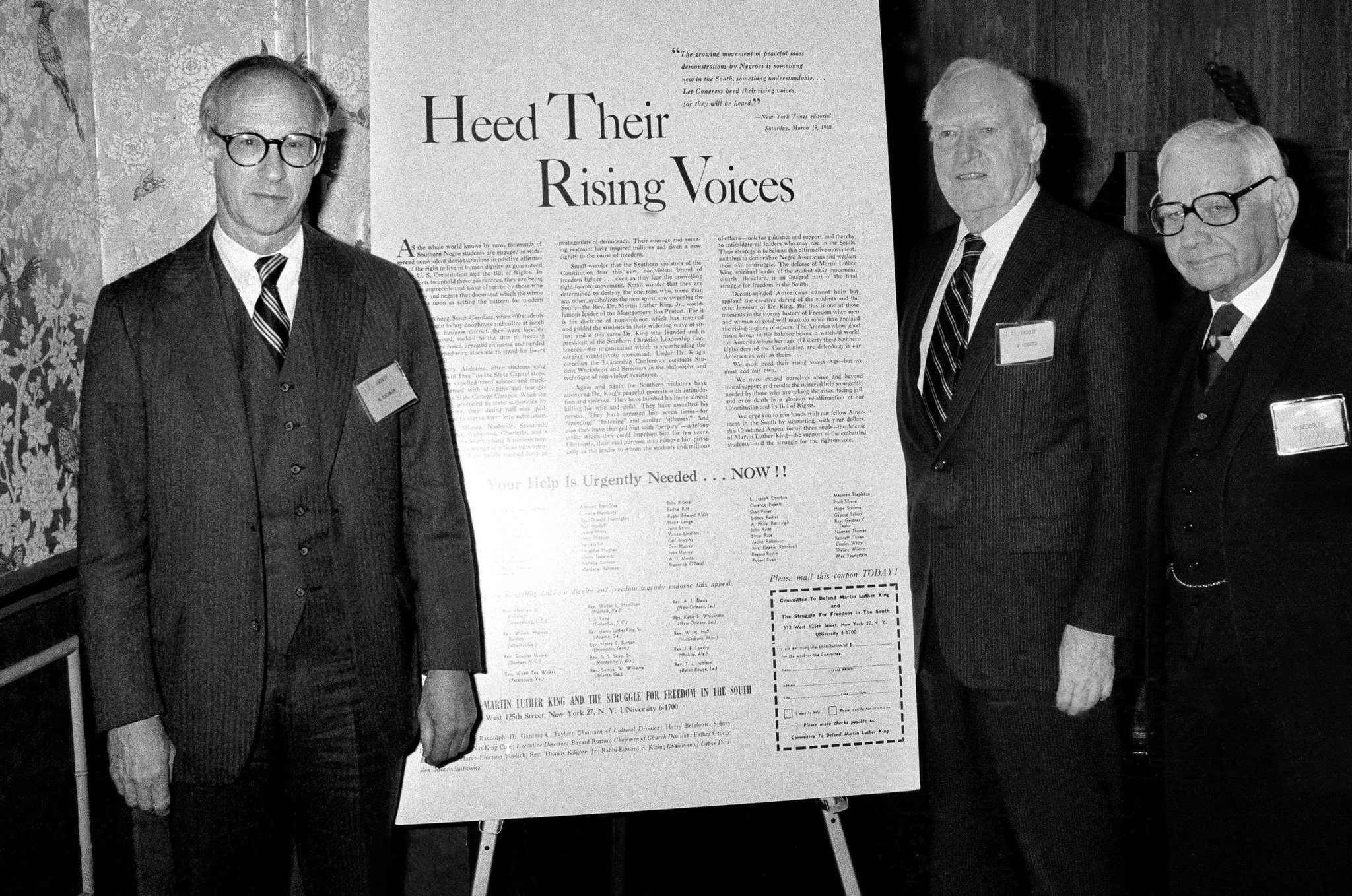New York Times Co. v. Sullivan – 1st Amendment
– limit the ability of American public officials to Sue
Annotation
Primary Holding
Facts
During the Civil Rights movement of the mid-20th century, the New York Times published a full-page ad for contributing donations to defend Martin Luther King, Jr. on perjury charges. The ad contained several minor factual inaccuracies, such as the number of times that King had been arrested and actions taken by the Montgomery, Alabama police. The city Public Safety commissioner, L.B. Sullivan, felt that the criticism of his subordinates reflected on him, even though he was not mentioned in the ad. Sullivan sent a written request to the Times to publicly retract the information, as required for a public figure to seek punitive damages in a libel action under Alabama law.
When the Times refused and claimed that they were puzzled by the request, Sullivan filed his libel action against the Times and a group of African-American ministers mentioned in the ad. A jury in state court awarded him $500,000 in damages. Curiously, the Times did eventually retract the ad’s statements when Alabama Governor John Patterson demanded it. The newspaper felt that, while Patterson also was not named in the ad, its comments reflected more directly on him because he represented the state of Alabama generally.

Opinions
Majority
- William Joseph Brennan, Jr. (Author)
- Earl Warren
- Tom C. Clark
- John Marshall Harlan II
- Potter Stewart
- Byron Raymond White
Brennan held that the First Amendment did not permit a finding of liability by Alabama courts in this context, especially considering the modest evidence that had been presented. When a statement concerns a public figure, according to Brennan, it is not enough to show that it is false for the press to be liable for libel. Instead, the target of the statement must show that it was made with knowledge of or reckless disregard for its falsity. Brennan used the term “actual malice” to summarize this standard, although he did not intend the usual meaning of a malicious purpose. “Malice” had a long-standing meaning within libel law that limited it to knowledge or gross recklessness rather than intent, since courts found it difficult to imagine that someone would knowingly disseminate false information without a bad intent. However, it previously had been used only to determine whether enhanced penalties, such as punitive damages, should be awarded.
Concurrence
- Hugo Lafayette Black (Author)
- William Orville Douglas
While he agreed with the majority’s reasoning, Black felt that the actual malice standard did not go far enough in providing First Amendment protections. He argued that it was not clear enough to be consistently applied.
Concurrence
- Arthur Joseph Goldberg (Author)
- William Orville Douglas
Case Commentary
This case clarified the scope of First Amendment protection for speech on matters of public concern, resolving a disagreement among lower courts as to whether it extended beyond opinion and comment to good-faith statements that proved to be factually and objectively false. In deciding that it did, the Supreme Court gave substantial protections to defendants such as newspapers and other media outlets by raising the burden of proof required for plaintiffs in libel claims.
Another, less familiar development associated with this case is the burden shifting from the defendant proving that the statement was true, as was traditionally done in defamation cases, to the plaintiff proving that the statement was false. Great Britain continues to adhere to the traditional rule, while Australia has followed the U.S. in making the shift.
In New York Times Co. v. Sullivan, 376 U.S. 254 (1964), the Supreme Court reversed a libel damages judgment against the New York Times. The decision established the important principle that the First Amendment guarantees of freedom of speech and press may protect libelous words about a public official in order to foster vigorous debate about government and public affairs.
This landmark decision constitutionalized libel law and arguably saved the civil rights movement.
Sullivan sued paper for mistakes in civil rights advertisement

New York Times Co. v. Sullivan began as a lawsuit against the newspaper for mistakes in a full-page civil rights fundraising editorial advertisement in 1960 entitled “Heed Their Rising Voices.”
The advertisement, protesting the treatment of the Rev. Martin Luther King Jr. by Alabama law enforcement, carried the names of prominent civil rights activists, including actors, writers, ministers, and other prominent Americans. The lawsuit was filed by L. B. Sullivan, an elected city commissioner in Montgomery, Alabama, whose duties included supervision of the local police. Under Alabama law, Sullivan only needed to prove that there were mistakes and that they likely harmed his reputation. A jury awarded him $500,000 in damages, an enormous sum at the time.
Court dismissed damage award, adopted actual malice standard
The Supreme Court unanimously reversed and dismissed the damage award. Writing for the majority, Justice William J. Brennan Jr. opined that “debate on public issues should be uninhibited, robust and wide-open” and said that vehement criticism and even mistakes were part of the price a democratic society must pay for freedom. (The advertisement had gotten wrong the number of times Martin Luther King Jr. had been arrested in Alabama, four times instead of seven, and details of police actions at Alabama State College.)
To protect open discourse, the Court adopted the “actual malice” test, meaning that no public official could win damages for libel without proving that the statement was made “with knowledge that it was false or with reckless disregard of whether it was false or not.”
The Court intended for this to be a high standard, one that public officials would have a hard time satisfying, one that required conduct by the news media that went beyond just negligence. Moreover, the Court made clear that the public official suing for damages had to prove the existence of actual malice “by convincing clarity.”
Court said advertisement had insufficient evidence of ‘actual malice’
Having set the new, high standard, the Court then established another important principle by immediately applying the new test to the facts of the case and declaring that there was insufficient evidence of “actual malice.” In other contexts, when the Supreme Court announces a new legal rule, the justices will send a case back to the lower courts to apply the new rule to the particular facts of the case. In New York Times Co. v. Sullivan, however, the Court established the principle of “de novo” review for free speech cases, meaning that the Supreme Court will determine for itself how legal principles apply to the facts of a case.
Sullivan transformed state libel laws by applying First Amendment protections
The Court’s reversal of the damage award was unanimous, but Justices Hugo L. Black and Arthur J. Goldberg expressed separate views that the Court’s rule was too restrictive of free expression. Joined by Justice William O. Douglas, they said the right to discuss public affairs and to criticize government should be unconditional.
Prior to Sullivan, libel and defamation were entirely matters of state law, and the rules on when individuals could recover damages for injuries to their reputations varied widely. In 1964, however, the Supreme Court transformed the field of libel law from one governed by the laws of the states to one whose contours were determined by the First Amendment.
In subsequent rulings, the Court vastly expanded the protection for the news media to apply not just to lawsuits by public officials but also to claims by public figures — people in the news or public eye.
News media say the standard may have increased costs of defending libel cases

The decision was a major First Amendment victory; yet, in less than two decades, there was criticism from opposite sides.
Some critics said the ruling made it too hard for individuals to undo damage to their reputations because it was difficult to prove actual malice. Other critics said the media were to exposed to the high cost of defending against lawsuits and appealing jury awards and too vulnerable to the intrusion on the newsgathering process caused by pretrial depositions and document discovery.
New York Times columnist Anthony Lewis wrote in 1983 that “it is not just judgments that worry publishers and reporters and others concerned with freedom of expression. It is the cost of defending libel actions: the cost not only in money but in time and in the psychological burden on editors and reporters.”
This criticism by the media of the impact of New York Times v. Sullivan has quieted in recent years. Over time, the federal appeals courts proved a reliable check on jury verdicts that seemed designed to punish the media without really satisfying the actual malice standard.
This article was originally published in 2009. Stephen Wermiel is a professor of practice at American University Washington College of Law, where he teaches constitutional law, First Amendment and a seminar on the workings of the Supreme Court. He writes a periodic column on SCOTUSblog aimed at explaining the Supreme Court to law students. He is co-author of Justice Brennan: Liberal Champion (Houghton Mifflin Harcourt, 2010) and The Progeny: Justice William J. Brennan’s Fight to Preserve the Legacy of New York Times v. Sullivan (ABA Publishing, 2014).
cited https://mtsu.edu/first-amendment/article/186/new-york-times-co-v-sullivan
New York Times Co. v. Sullivan, 376 U.S. 254 (1964)
U.S. Supreme Court
New York Times Co. v. Sullivan, 376 U.S. 254 (1964)
New York Times Co. v. Sullivan
No. 39
Argued January 6, 1964
Decided March 9, 1964*
376 U.S. 254
Syllabus
Respondent, an elected official in Montgomery, Alabama, brought suit in a state court alleging that he had been libeled by an advertisement in corporate petitioner’s newspaper, the text of which appeared over the names of the four individual petitioners and many others. The advertisement included statements, some of which were false, about police action allegedly directed against students who participated in a civil rights demonstration and against a leader of the civil rights movement; respondent claimed the statements referred to him because his duties included supervision of the police department. The trial judge instructed the jury that such statements were “libelous per se,” legal injury being implied without proof of actual damages, and that, for the purpose of compensatory damages, malice was presumed, so that such damages could be awarded against petitioners if the statements were found to have been published by them and to have related to respondent. As to punitive damages, the judge instructed that mere negligence was not evidence of actual malice, and would not justify an award of punitive damages; he refused to instruct that actual intent to harm or recklessness had to be found before punitive damages could be awarded, or that a verdict for respondent should differentiate between compensatory and punitive damages. The jury found for respondent, and the State Supreme Court affirmed.
Held: A State cannot, under the First and Fourteenth Amendments, award damages to a public official for defamatory falsehood relating to his official conduct unless he proves “actual malice” — that the statement was made with knowledge of its falsity or with reckless disregard of whether it was true or false. Pp. 376 U. S. 265-292.
(a) Application by state courts of a rule of law, whether statutory or not, to award a judgment in a civil action, is “state action” under the Fourteenth Amendment. P. 376 U. S. 265.
(b) Expression does not lose constitutional protection to which it would otherwise be entitled because it appears in the form of a paid advertisement. Pp. 376 U. S. 265-266.
Page 376 U. S. 255
(c) Factual error, content defamatory of official reputation, or both, are insufficient to warrant an award of damages for false statements unless “actual malice” — knowledge that statements are false or in reckless disregard of the truth — is alleged and proved. Pp. 376 U. S. 279-283.
(d) State court judgment entered upon a general verdict which does not differentiate between punitive damages, as to which, under state law, actual malice must be proved, and general damages, as to which it is “presumed,” precludes any determination as to the basis of the verdict, and requires reversal, where presumption of malice is inconsistent with federal constitutional requirements. P. 376 U. S. 284.
(e) The evidence was constitutionally insufficient to support the judgment for respondent, since it failed to support a finding that the statements were made with actual malice or that they related to respondent. Pp. 376 U. S. 285-292.
273 Ala. 656, 144 So. 2d 25, reversed and remanded.
Page 376 U. S. 256
cited https://supreme.justia.com/cases/federal/us/376/254/

